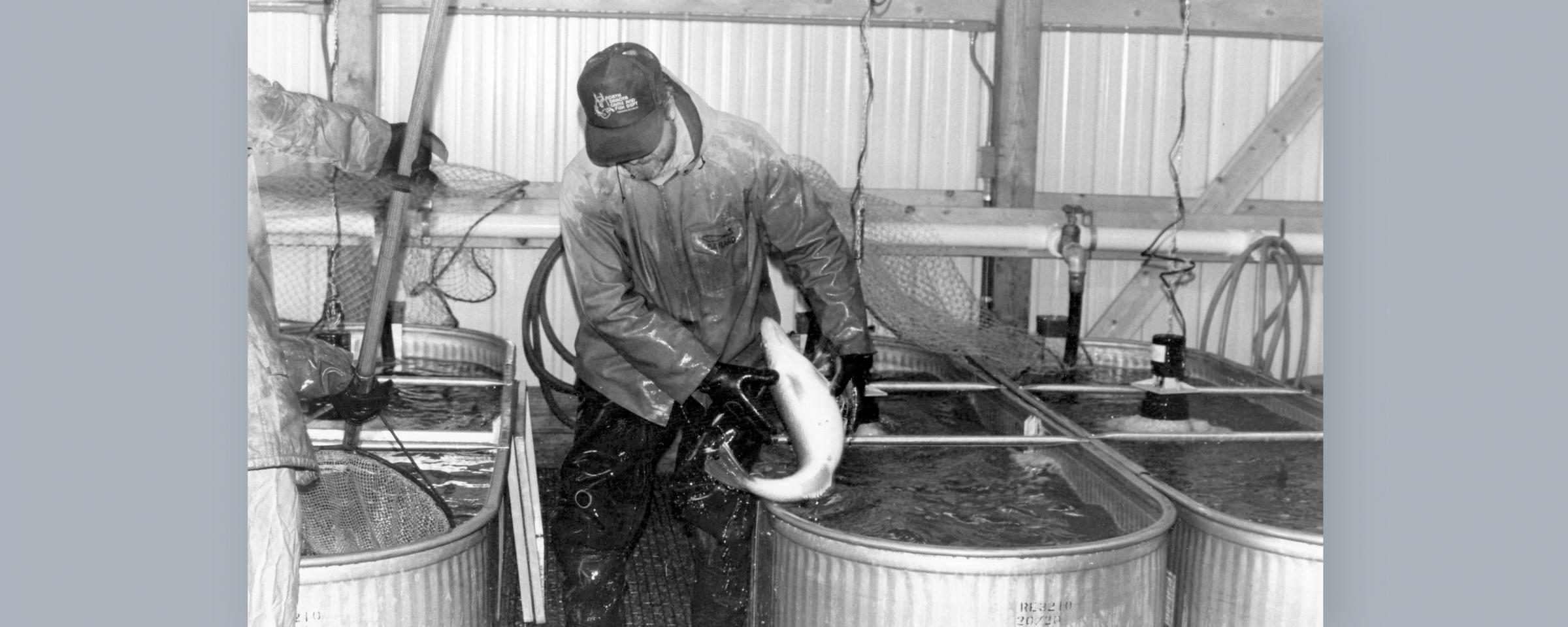
A Look Back
The peak of the walleye spawn typically occurs when water temperatures are between 48-54 degrees Fahrenheit. In North Dakota, that’s sometime between mid-April and early May, depending on the weather and location.
While it’s impossible to tell what the weather is doing in this photograph taken in 1989, we know that it’s May 3, because Harold Umber, former North Dakota OUTDOORS editor, wrote the date on the back of the black and white image.
The photograph was taken in a Game and Fish Department "spawning shack," located at White Earth Bay on Lake Sakakawea.
The White Earth spawning shack – the Game and Fish Department constructed three over the years, two on Sakakawea and one on Lake Oahe – was built in 1985.
According to an article in North Dakota OUTDOORS in 1992, the shack was built "to take advantage of the good walleye runs that occurred there and to maximize the egg take from a walleye population whose future was clouded from a lack of reliable natural reproduction."
Like the others, the spawning shack at White Earth Bay has been out of operation for years, said Greg Power, Department fisheries chief.
"The White Earth Bay shack is still standing and we’re in the process of turning it over to a local government entity," Power said. "We haven’t turned on the electricity there in years."
When the facility was up and running, it was a busy place in spring for Department fisheries personnel and was a draw to area schools.
"The White Earth shack was a very good instructional tool as busloads of kids would come and watch us spawn fish," Power said. "Having the building got the kids out of the elements because on any given spring day it could be blowing and snowing."
While the shack provided a respite from the weather for fisheries biologists and visitors, hauling fish netted from the lake up to the shack, and moving walleye not quite ready to spawn from tank to tank, was a lot of work.
"There were instances where we would handle fish several times before they were ready to give up their eggs," Power said. "The way we do it today, we’re handling fish two, maybe three times."
Today, instead of being tied to a spawning shack site, fisheries biologists are more mobile.
"We’re fortunate to have areas with large concentrations of spawning walleyes and our fisheries biologists are going where the fish are," Power said. "We learned that we had to be mobile. It’s all about efficiency."
While walleye spawning operations have changed over time, the goal of gathering enough eggs to meet hatchery requests remains the same.
"We’re spawning more fish than a decade ago," Power said. "We also have 59 new walleye lakes that didn’t exist a decade ago."
